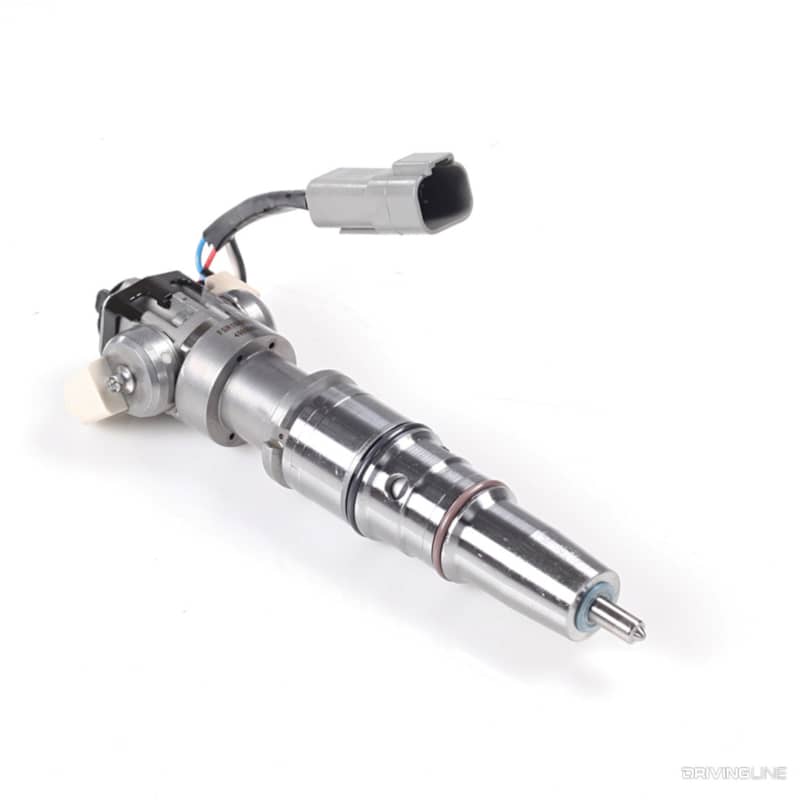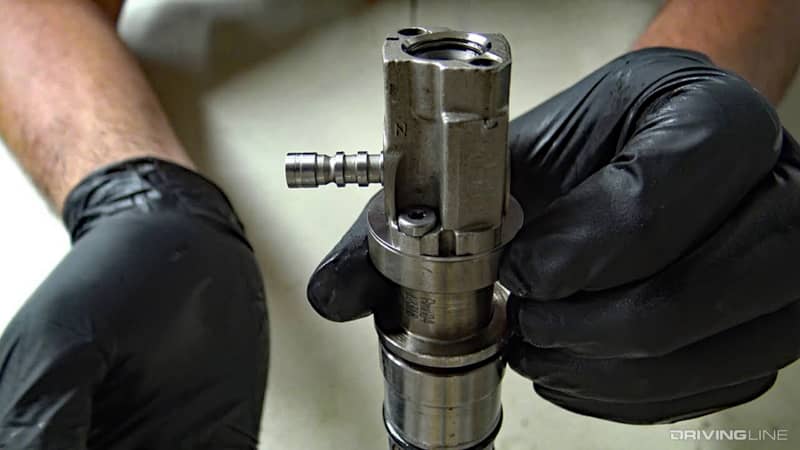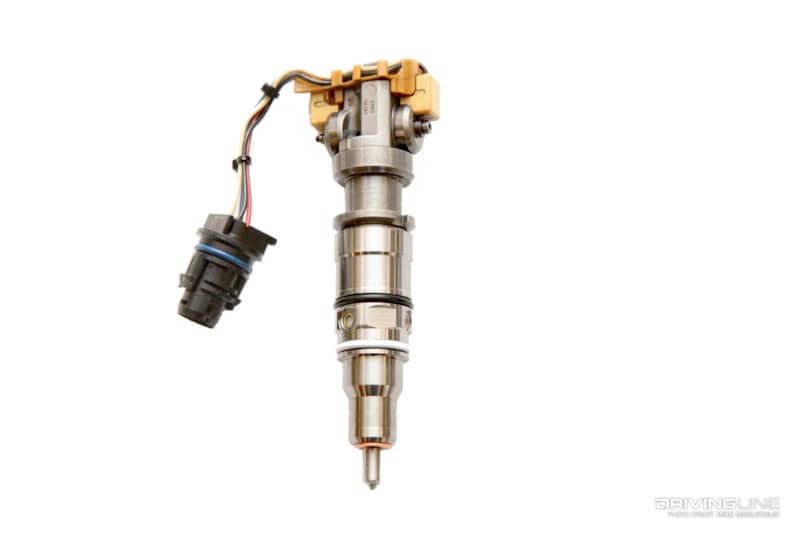6.0L Power Stroke Problems, Part 6: Injectors
In part 5 we spelled out the most common issues associated with the 6.0L Power Stroke’s high-pressure oil pump, so it stands to reason why we’re spotlighting the problems that plague the next major component(s) downwind of it: the fuel injectors. The 6.0L’s fuel injectors get a pretty bad rap, but only part of it is deserved. Sure, they often suffer from stiction—an undesirable phenomenon that hampers the spool valve’s ability to allow the hydraulic actuation that’s required to fire them—but some problems are created by the end-user. Lack of maintenance (i.e. oil changes), poor quality engine oil, improper injector installation or cheap, inferior replacement injectors can all contribute to an engine that’s literally no longer firing on all eight cylinders.
So whether you’re looking to keep your current injectors in tip-top shape, want to avoid common injector replacement errors or need more information about stiction, you’ve come to the right place. Keep scrolling.
With Sound Maintenance, They Aren’t Ticking Time Bombs

Don’t believe all the gossip! Despite what you may have heard, it’s fairly easy to make the injectors in your 6.0L Power Stroke last 150,000 miles or more. Proper maintenance, a quality engine oil and a stiction-eliminating oil additive go a very long way in this second-generation HEUI style injector (HEUI is short for hydraulically actuated electronically controlled unit injector).
How The 6.0L Injector Works

As with any HEUI system, highly-pressurized engine oil is used to hydraulically actuate the fuel side of the injector, but only after being allowed to enter the injector body. This is done electronically, and in the 6.0L Power Stroke engine’s case it happens like this: the PCM (powertrain control module) commands the FICM (fuel injection control module) to send a 20-amp pulse to one of two coil assemblies on the top of the injector. The energized coil assembly in turn opens the injector’s spool valve, which directs high-pressure engine oil into the injector body, where it acts on the intensifier piston. From there, the intensifier piston forces the plunger beneath it downward, and fuel is ultimately sprayed out of the injector nozzle and distributed in-cylinder.
The Biggest Issue: Stiction

Over time, the varnish, sludge and carbon buildup left behind on the spool valve from engine oil can lead to friction. Eventually, the spool valve no longer opens and closes as precisely or quickly as it needs to (we’re talking microseconds here). This is stiction at work. Stiction typically reveals itself in the form of rough, hard starts, excessive smoke upon start-up, a choppy idle until warm, and failed cylinder contribution tests. Due to its tiny tolerances, it doesn’t take a lot of buildup for the spool valve to begin to bind up and stick in its bore. This is why running a quality engine oil, as well as a stiction-fighting oil additive, is so important.
Preventing Stiction

Especially for 6.0L Power Strokes that live in colder climates, a lower viscosity engine oil such as a 5W-40 is ideal. This is because a thinner oil will flow through the spool valve’s tight tolerances much better in cold temperatures than a thicker oil will—and a 5W-40 won’t sacrifice performance once the engine is up to operating temp. The 5W-40 synthetic oil from Amsoil shown above retains its viscosity even during extreme temperature operation. It also resists oxidation and the thickening effects of soot contamination. If you’re driving an EGR-equipped 6.0L, high levels of soot are present in the engine oil, which is never good for spool valves. Once again, choose a quality engine oil for your 6.0L. And last but not least, perform your oil changes according to Ford’s severe operating conditions recommendation (which calls for 5,000-mile oil changes rather than 7,500-mile intervals).
Solving Stiction

While there is a point of no return with spool valve wear, in which the injectors will need to be replaced, many times stiction issues can be solved with the use of select oil additives. The proven products from Hot Shot’s Secret, Rev-X and Archoil are specially formulated to eliminate stiction. Each additive removes varnish and carbon build up from the spool valves and leaves a super-lubricant coating behind, making for friction-free surfaces on the spool valve. But these additives don’t just solve stiction and preserve the life of your spool valves, they clean and lubricate any component that engine oil touches. This includes your piston rings, bearings, low and high-pressure oil pumps, turbo, everything. Even if you’ve yet to experience stiction, adding the recommended amount of additive at each oil change—which is known to keep a set of 6.0L injectors alive for 200,000 miles or more—will essentially guarantee that you never do.
Installation Issues

Believe it or not, a lot of the 6.0L’s injector issues come from improper installation. Torn or rolled O-rings and inaccurately torqued injector hold-down bolts are common missteps that many DIY’ers and even some professional mechanics make. Proper O-ring lubrication and alignment in the bore can solve most O-ring issues, while the use of hand tools (rather than electric or air tools) is the only way to precisely fasten and torque (to 24 ft-lb) the injector hold down bolts. It also pays to inspect and ensure the cleanliness of the each injector hold-down bolt bore prior to installing each fastener.
New Or Reman, Stick With OEM Injectors

If you find yourself in a situation where you have to buy new injectors, don’t get cheap. Those “Internet” injectors cost next to nothing for a reason—and you’ll be replacing injectors twice if they don’t live up to their sales pitch. If you opt for remanufactured units, you should stick with OEM Motorcraft injectors for three key reasons. 1. All reman Motorcraft injectors are equipped with brand-new coil assemblies, spool valves and plungers. 2. All high-pressure oil sealing surfaces are re-machined to meet factory specifications. 3. All injector nozzles are restored to OEM specifications and are even flow tested for validation purposes.
Low Fuel Supply Pressure

On the fuel side of the equation, a lack of fuel supply—or worse, air in the fuel—can take a lot of miles off of your injectors. The plungers, barrels, needle and other components not only need adequate fuel pressure in order to maximize each injection event in-cylinder, but they need it for proper lubrication and cooling. With many 6.0L engines known to produce 45-psi worth of fuel pressure, the minimum amount Ford requires the injectors see, many more feed 40-45 psi to the injectors. To raise fuel pressure, Ford released its blue regulator spring kit, which utilizes a longer regulator spring to increase fuel pressure 15 to 20-psi. With this kit installed, most 6.0L’s go from seeing 40-48 psi at idle to 65 psi.

More From Driving Line
- Injector and HPOP issues are bad enough, but a failing oil cooler can take a toll on every component that sees engine oil. Read up on the 6.0L’s most notorious failure point here.







